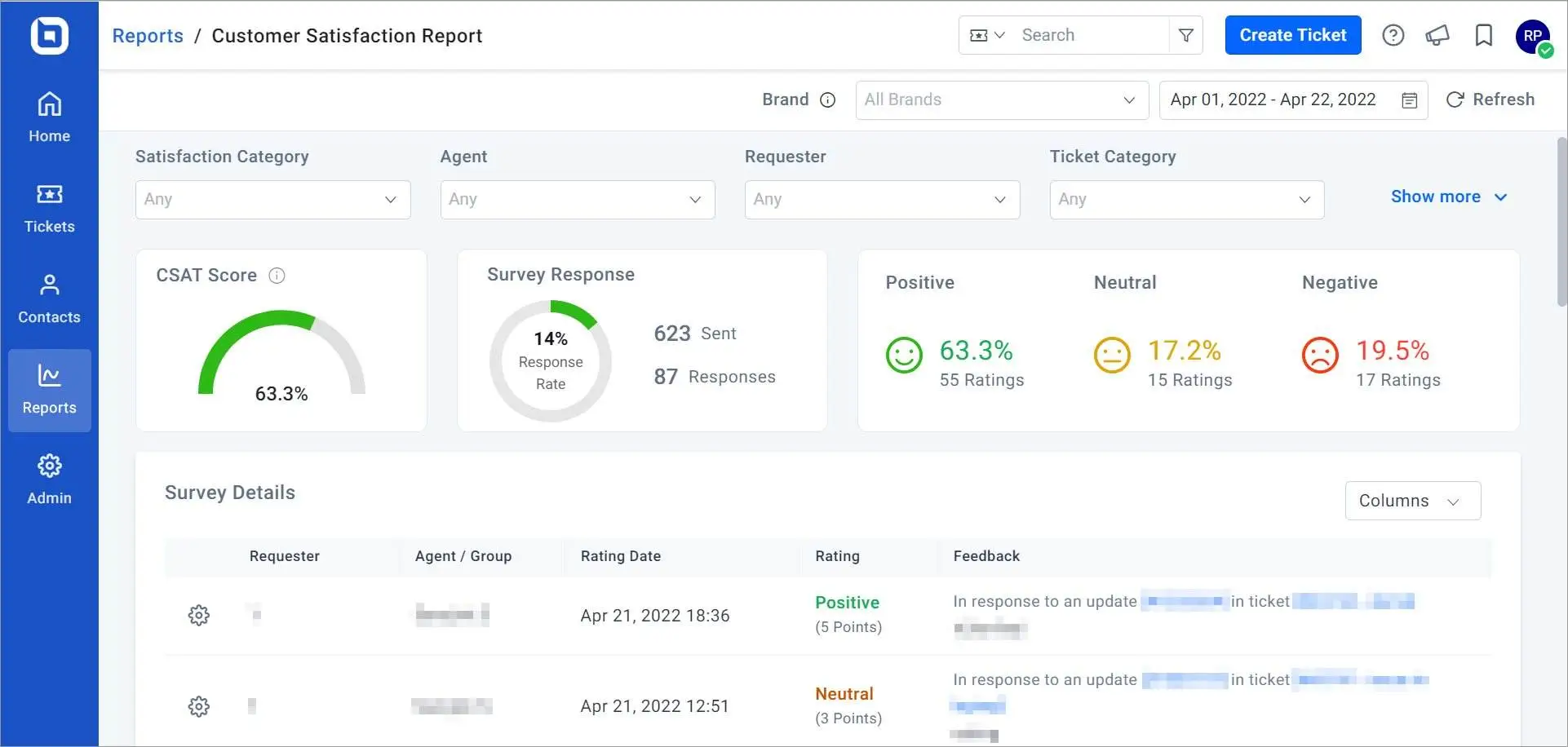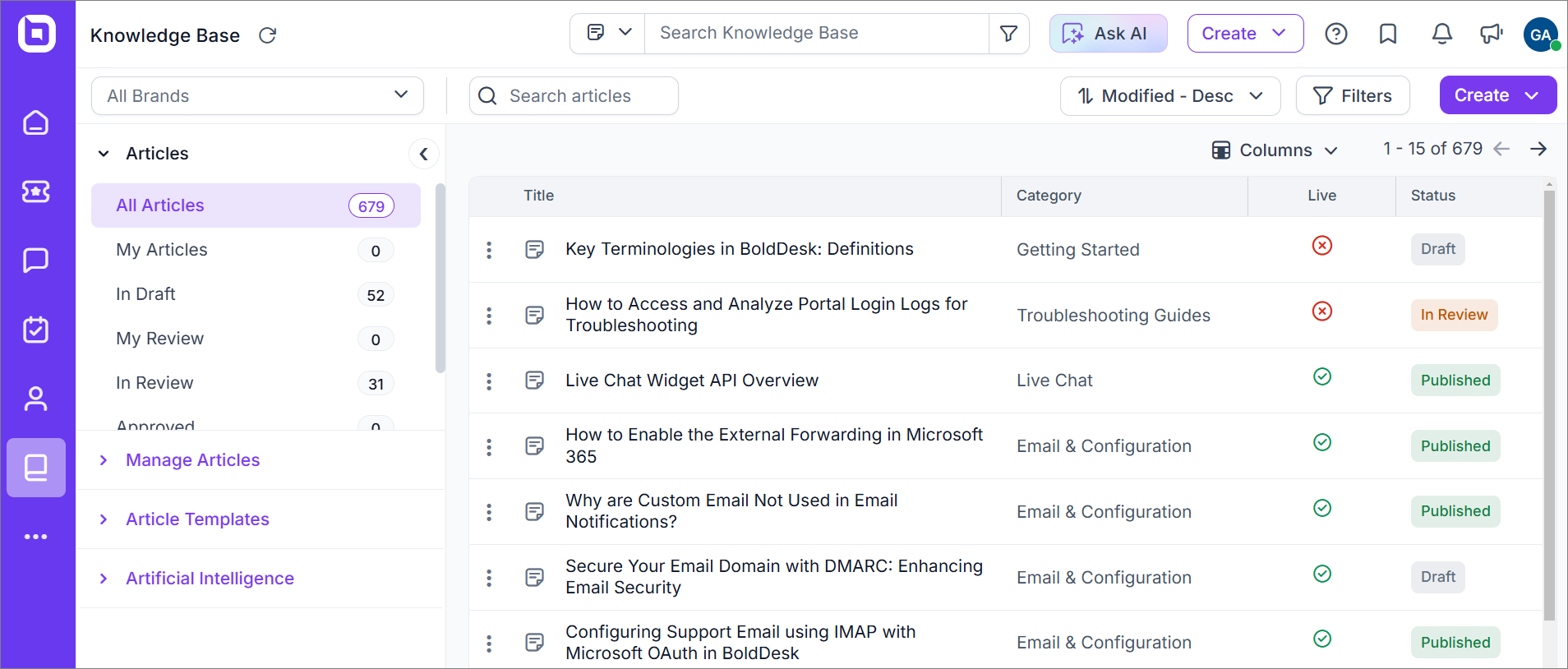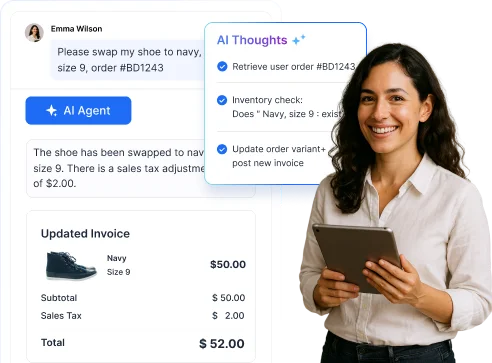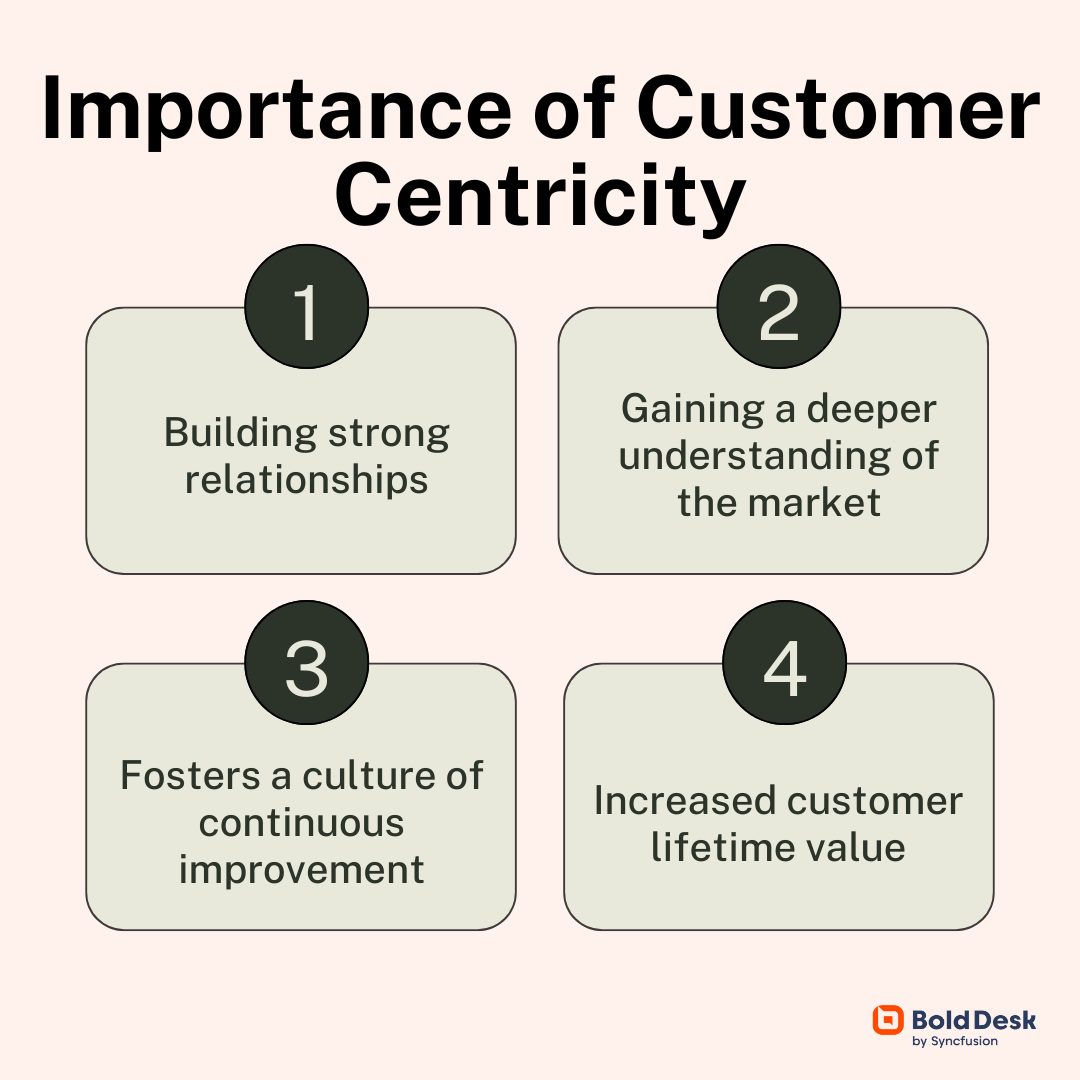It is important for businesses to use customer-centric strategies in order to prioritize the needs of customers.
Customer-centricity involves aligning your business to accommodate all aspects of the customers’ experience, ensuring satisfaction and long-lasting relationships.
Understanding and catering to customer demands helps you gain a competitive edge, increase customer loyalty, and ultimately achieve sustainable growth.
This blog discusses what customer centricity is, how best to create a customer-centric strategy and why putting customers first is important for any business. Let’s explore more!
What is customer centricity?
Customer centricity is a business strategy whereby brands focus on the customer, placing them at the forefront of all decision-making processes and business functions.
It entails prioritizing the needs, preferences, and satisfaction of customers to create long-term value and build strong relationships.
By adopting a customer-centric mindset, organizations can easily:
- Understand and anticipate customer expectations
- Customize the brand to meet customer needs
- Deliver outstanding experiences throughout the customer journey
This customer-focused approach ultimately leads to increased customer loyalty, higher retention rates, and sustainable business growth.
Customer centricity definition
Customer centricity refers to a business strategy that places the client at the heart of all decision-making processes, shaping products, services, and the overall customer experience to meet and exceed customer needs and expectations.
It involves a deep understanding of customers’ preferences, behavior, and values, and aligns company resources and operations based on those insights.
How to build a customer-centric strategy
Transforming an organization into one that is customer-centric involves a shift in mindset and culture. Here are strategies to facilitate this transition.
1. Collect feedback from customers and act
By actively listening to customer feedback, both your team members and your company can gain a better understanding of your customers’ needs and their evolving nature.
Statistics from Survey Monkey report that 85% of customers indicate that they are likely to provide feedback when they have a positive experience with a brand or company, while 81% are willing to offer feedback following a negative experience.

You do not need a mobile app system to gather feedback. You can use:
- Surveys
- Online reviews
- Social media
- Discussion forums
- Support tickets
At times, you may receive negative feedback. This is not a bad thing. Negative feedback can help improve your business too.
2. Offer exceptional customer service
In a customer-centric company, it is essential to provide comprehensive training on customer service resources with a strong emphasis on developing empathy.
Crucial skills like listening actively and learning the art of asking considerate questions require training for their acquisition. Application of these skills fosters client satisfaction directly.
3. Use customer data effectively
To be customer centric, businesses must effectively use their customer data to gain insight into preferences, behaviors, and needs, allowing the modification of products, services, and marketing strategies.
Customer data is essential for a customer-centric approach. It offers:
- Insight
- Personalized experiences
- Predictive needs
- Improved support
- Informed marketing strategies
This approach enhances relationships, increases revenue, and establishes businesses as industry leaders.
4. Give rewards to loyal customers and employees
To create a great customer-centric strategy, gather input from your customers and employees.
Recent data from Zippia shows that the majority of consumers, specifically 75%, prefer companies that give rewards.
To enhance customer relationships, companies should:
- Offer referral programs
- Offer surprise gifts
- Offer loyalty programs
Loyalty rewards—both employee and customer—should be considered to be an indispensable aspect when one intends to establish a customer-focused workforce.
It contributes to business success by creating a positive customer experience and motivating employees to align their actions with customer needs and preferences.
5. Understand and develop products or services based on customer needs
To satisfy customers, businesses should create customized products, services, and brands that align with market demands.
Additionally, businesses should deliver above customer expectations.
Developing customer-oriented products and services or brands, and incorporating customer feedback, is crucial for businesses to succeed in a competitive marketplace.
6. Encourage autonomy and empower employees
Promoting autonomy and empowerment among employees, particularly in relation to customer centricity, contributes to the success of any organization.
Encouraging autonomy means giving employees freedom to make great decisions and take ownership of their work to better serve customers.
Employees will take it to heart to fulfill or almost exceed the expectations of customers, maximize engagement satisfaction, and improve customer experience when it is empowered.
Thus, it builds trust and encourages employees to understand customer preferences.
7. Enhance your marketing approach
To optimize your marketing strategy, prioritize customer centricity. Understand your customers’ needs, preferences, and behaviors to design your approach.
A customer-first marketing approach involves using different channels and touch points to engage customers. It includes the following.
- Digital platforms (social media, email marketing)
- Traditional channels (direct mail)
Enhancing customer centric marketing is vital in today’s competitive business landscape.
Prioritizing the customer and designing marketing efforts builds long-lasting relationships and achieves sustainable growth.
8. Engage customers by incorporating them into the solution process
Involve customers in your decision-making process to effectively foster engagement.
Customer-centric businesses gain valuable insight and cater to specific needs by involving their customers in decision-making.
Seeking customer input enhances:
- Understanding
- Relationship satisfaction
- Loyalty and long-term success
A self-service portal can be created using knowledge base software to efficiently help customers find the assistance they need.

This platform must contain:
- Complete details about the products and services
- Frequently asked questions
- Instructional videos
Involve your clients in the process of finding solutions to empower them to address their own concerns.
The importance of having a customer-centric business
Building a business based on customer centricity is significant in achieving sustainable growth in the following ways.
Building strong relationships
Adopting a customer-centric strategy allows businesses to build strong relationships with their customers.
By understanding their needs, preferences, and expectations, businesses can personalize their offerings to meet and exceed customer demands.
This approach enhances satisfaction, fosters loyalty, and generates repeat business and positive client referrals.
Gaining a deeper understanding of their target market
Customer centricity helps businesses understand their target market by analyzing customer data.
This allows businesses to identify market trends and customer preferences, therefore developing innovative solutions that suit client demands.
It also helps businesses anticipate and respond to market changes, ensuring their products and services remain in demand.
Foster a culture of continuous improvement
A customer-centric approach drives continuous improvement in organizations.
Customer feedback is a crucial part of this strategy, businesses can identify and make necessary changes to enhance the overall customer experience.
Statistics from Invesp indicate that 89% of companies consider customer experience to be a main element in building customer loyalty and retention.
This commitment not only strengthens relationships but also improves operational efficiency, productivity and profitability.
Increased customer lifetime value
A customer-centric strategy increases customer lifetime value by nurturing long-term relationships, maximizing value from each customer, boosting revenue, and reducing acquisition costs.
Satisfied and loyal customers also increase cross-selling and upselling opportunities for further revenue growth.
Challenges of customer centricity
Implementing and maintaining a customer-centric approach in business operations involves prioritizing customer experience and satisfaction to build long-term relationships.
This entails placing the customer at the center of the business strategy. Here are a few of the obstacles regarding customer centricity:
Unavailability of suitable customer support tools
To become a customer-centric business, it is necessary to have customer support tools such as self-service portals, effective ticketing tools, automation tools, and more.
The absence of these tools can result in chaotic workflows and procedures, ineffective support teams, and dissatisfied customers.
Inadequate employee empowerment
Customer support teams face challenges in handling customer queries and concerns due to inadequate training and knowledge gaps among team members.
Insufficient training programs and lack of knowledge about the company’s products or services result in delayed response times, unsatisfactory resolutions, and customer dissatisfaction.
For great customer centricity, all sectors in an organization require the right customer information at their fingertips.
The inability to fulfil evolving customer expectations
Businesses struggle to adapt to evolving customer expectations due to outdated models, insufficient research, or resistance to change, resulting in failure to meet customer demands.
In the fast-changing market, a business ought to know its customer needs and work toward fulfilling those needs to grow into an industry leader for a sustained success.
Customer centricity examples
Following are examples of leading brands that excel at prioritizing the customer experience.
Nike
Nike defines customer centricity with regard to putting the athlete experience at the very center of the entire journey. Nike strives to meet customer needs constantly through data-driven product development and personalized apps.
This focus on building a strong connection that goes beyond just selling shoes and apparel makes Nike a true partner in their customers’ athletic pursuits.
Amazon
Customers enjoy easy, convenient shopping, with many products and competitive prices; unmatched delivery speed, courtesy of services like Amazon.
In addition, the retail giant collects client feedback to optimally improve its platform and provide further personalization of recommendations.
Moreover, the introduction of an innovative voice-assistant device under the Amazon brand, Alexa, with seamless cloud integration for IoT devices has a very precise anticipation of customer needs.
Apple
Apple’s customer-centric approach is evident in its product design, retail store experience, and after-sales support. The company creates intuitive and user-friendly devices that cater to consumer desires and lifestyle needs.
The brand maintains a unique in-person experience directly via its stores. Knowledgeable staff with the Genius Bar for technical support, in the context of a setting that perfectly aligns with customers’ expectations of premium experience.
The Ritz-Carlton Hotel Company
The Ritz-Carlton has long been synonymous with luxury and top-tier customer service. Its philosophy of “Ladies and gentlemen serving ladies and gentlemen” reflects a deep-seated culture of respect and attentive service.
The company empowers employees to create memorable experiences for guests, and it carefully tracks customer preferences to tailor its service accordingly.
The Ritz-Carlton’s commitment to customer centricity is evident in its consistent recognition for exceptional service in the hospitality industry.
Creating a customer-centric culture
In creating a culture that has the customer in mind, it is all about ensuring the customer requirements are met no matter what in every direction.
Implementing a customer-centric strategy will significantly enhance both support and the overall functioning of the organization.
Consequently, this will lead to improved client relationships and increased revenue for all parties involved.
It is crucial to monitor and assess the level of customer centricity, understand the actions taken, and effectively guide your customers throughout their planned journey.
Remember that satisfied customers hold great value.
BoldDesk® provides the greatest customer centric policies. Try the free trial to test its features for your team. Book a live demo to see how you can utilize BoldDesk to meet your customers’ needs. Contact our BoldDesk support team for any BoldDesk inquiries.
Related articles



















 Email Ticketing System
Email Ticketing System Shared Inbox Software
Shared Inbox Software Multi Brand Help Desk
Multi Brand Help Desk Internal Help Desk Software
Internal Help Desk Software Trouble Ticketing Software
Trouble Ticketing Software Mobile Help Desk
Mobile Help Desk 
















